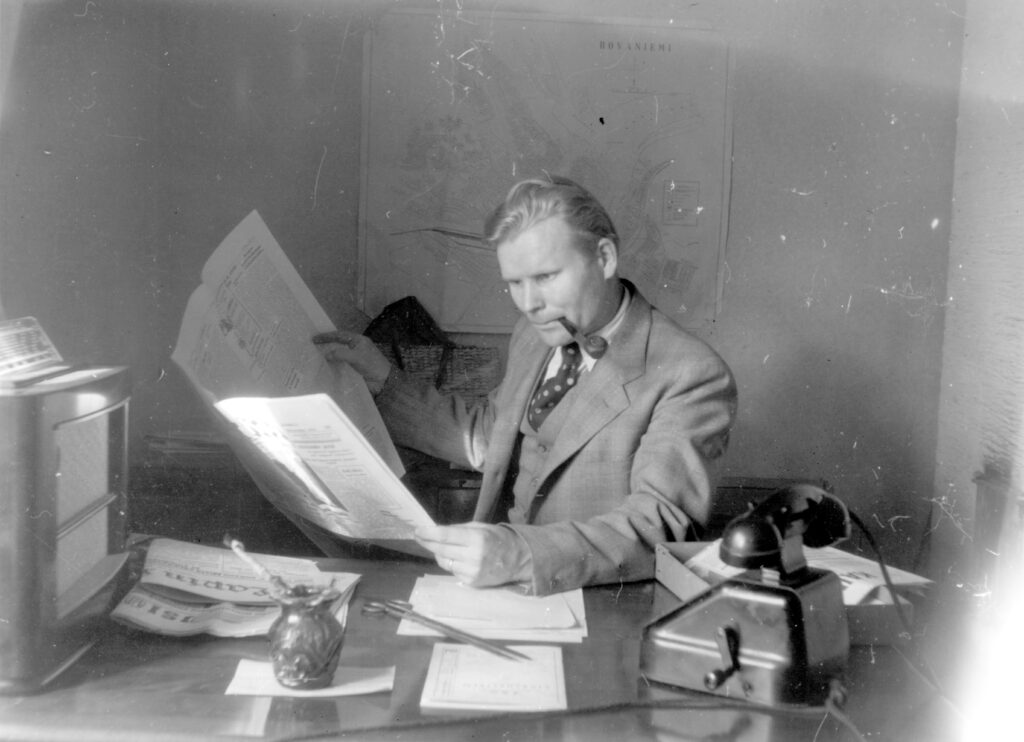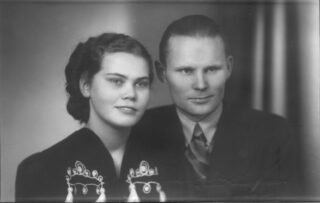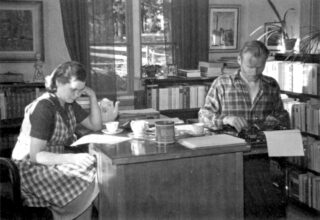Starting in 1936, Reino Rinne began assisting the Kaleva newspaper from Oulu. His articles, published under the pseudonym Olavi Kitkalainen, mostly dealt with current events in Posio.
At the end of 1937, Reino Rinne started his studies at the University of Social Sciences in Helsinki, but due to financial difficulties he had to stop them at the beginning. However, he managed to establish his relationship with Kaleva, where he got a vacancy as a summer editor. After the Winter War, the employment in Kaleva continued as a journalist, from where he moved to Rovaniemi as the editorial secretary of Lapin Kansa. This is how he had established his position as a Northern Finnish journalist.
During the Continuation War, Reino Rinne was called to the Finnish army’s information company as a TK man with the task of monitoring war events and reporting them to the civilian population in the media. He visited most of the Finnish front blocks and continued his mission until November 1944, following the Finnish army in Lapland as it forced the German troops to retreat to Norway.
After the war, Reino Rinne continued his work as a journalist in Kaleva and was the editorial secretary of Kaltio, a cultural magazine founded in Oulu in 1945. In the same year, he published his first novel The Fells Are Smiling. It started a series of three works, which the literary public and critics placed in Lapland literature. The first publish was followed by The Road Ends on Top of the Fell (1946), considered Rinne’s masterpiece, and then The People of the Wilderness (1949). Otava’s published works undoubtedly fulfilled his youthful dream of becoming a writer.
Buoyed by literary success, Reino Rinne accepted the job offered to him as editor-in-chief of Lapin Kansa in Rovaniemi. However, the position did not suit him, and his resignation led to a job as a freelance writer and a move to Posio.


